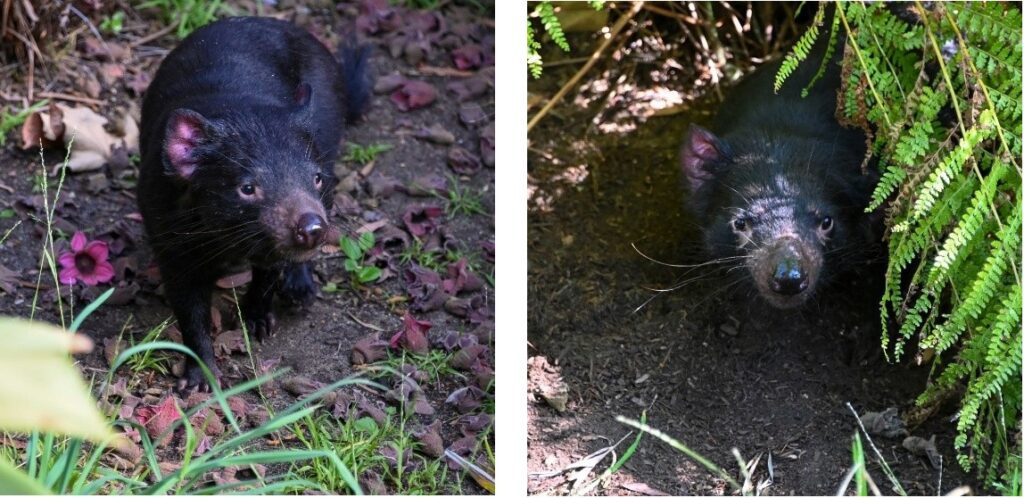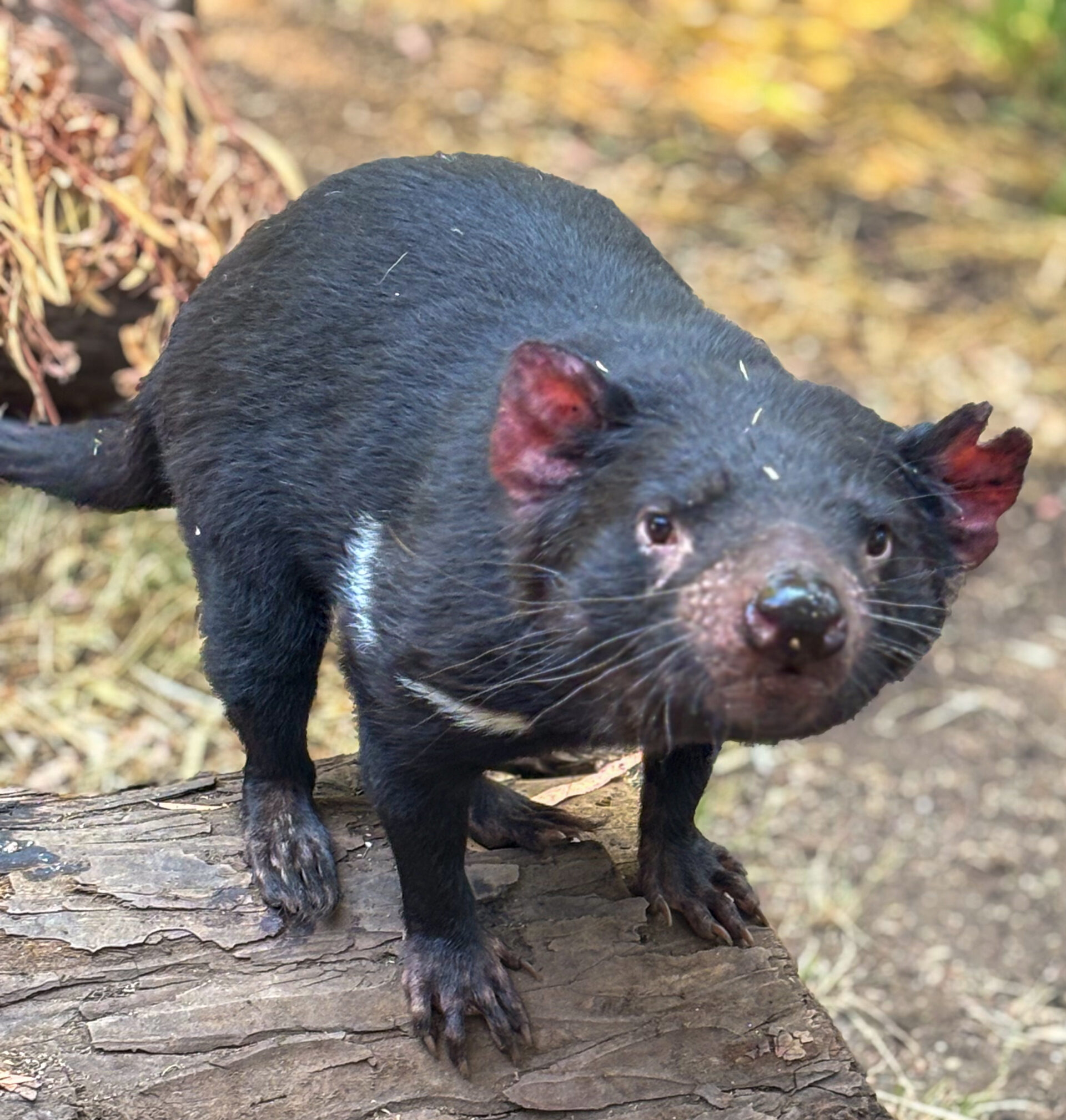About
Tasmanian devils are indigenous only to Tasmania, an island state of Australia located just south of the mainland.
A typical devil habitat includes eucalyptus forests, woodlands, and coastal scrublands. They find shelter under stones, in caves, bushes, burrows, or hollow logs. With their stout build and oversized heads, Tasmanian devils might appear clumsy at first glance, but these marsupials reign as Tasmania’s top predator and have the strongest bite force relative to body size of any mammal. They are naturally curious and surprisingly active. Guided by sharp senses of smell and hearing, they track down both live prey and carrion. Though they are primarily scavengers, they are also capable hunters of small birds and mammals.
While mostly solitary, devils will gather around a carcass, often leading to noisy, dramatic feeding frenzies filled with growls and screeches. These intense gorge sessions let them consume a hefty amount of food at once. Like many scavenger species, devils play a vital role in keeping their ecosystem healthy.
Tasmanian devils are classified as Endangered by the International Union for Conservation of Nature (IUCN) Red List. Threats include human-wildlife conflict, conflicts with dogs and dingos, and a rare disease known as Devil Facial Tumor Disease that only affects Tasmanian devils.

Habitat
On the island state of Tasmania, their habitat consists of eucalyptus forests, woodlands, and coastal scrublands. They find shelter under stones, in caves, bushes, burrows, or hollow logs.
Diet
These marsupials are carnivorous and primarily scavengers. They are also capable hunters and will prey on small birds and mammals.
LOCATION WITHIN THE ZOO
You’ll find this animal in the Australia section. See Zoo Map.

